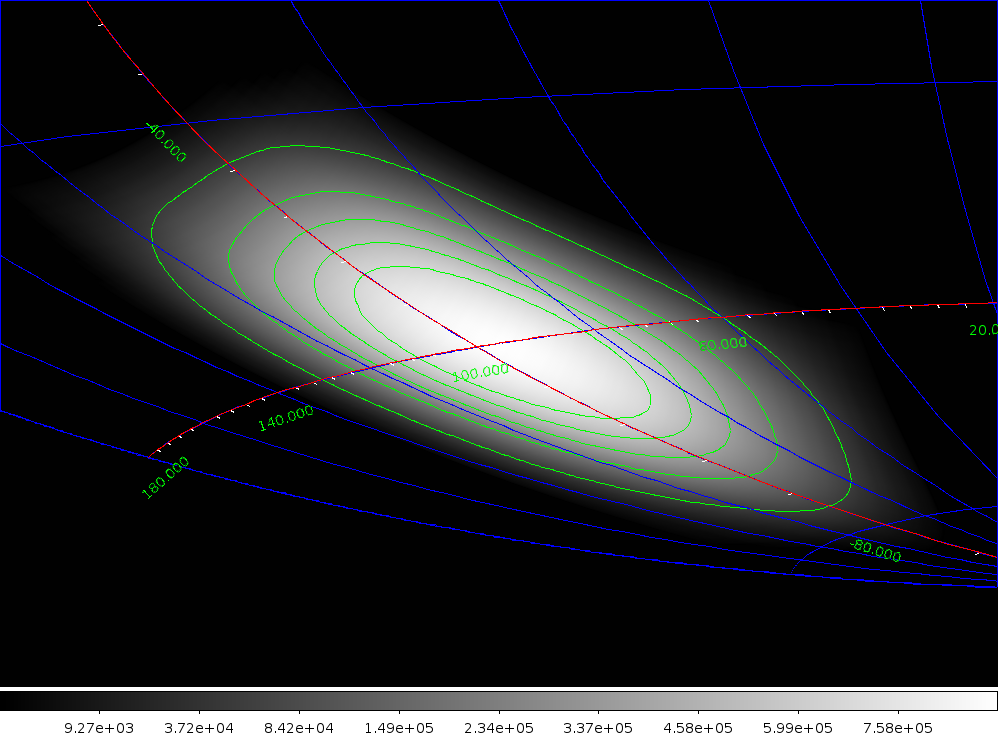Proposal Details - 1120003
Keeping watch over our Galaxy - the return of the GPS (Bazzano)
Proposal Abstract
For the first 5 years of INTEGRAL's operational life, the scientific Core Programme included a key component that was regular scans of the Galactic Plane. These led to a wealth of discoveries of new sources and source types, a large fraction of which were highly transient. These discoveries can certainly be considered one of the strongest results from, and legacies of, INTEGRAL. From AO-5 onwards, these regular scans were discontinued, and this resulted in a significant drop in the discovery rate of new systems in and around the plane of our Galaxy. In AO-8, however, a multi-year proposal to reinstate the scans was approved and the programme was continued in AO-9, and is still ongoing in AO-10. It is proposed here to continue the Galactic Plane Scans as a Key Programme throughout AO-11, to regularly monitor known systems as well as to dramatically enhance the chances of discovering new systems. This will allow a rapid response to bright events and a detailed study of faint transients and long-term activity. Such a programme will be of high value to a very large fraction of the high-energy astronomy community, stimulating science immediately, and furthermore contributing greatly to the INTEGRAL legacy.To this aim, a total of 2 Msec (1 in AO-10 and 1 in AO-11) of observations has been approved to cover the plane with regular scans every orbit, excluding the central zone that will be covered by the Galactic Bulge monitoring programme (see proposal 1120001), and any other region studied deeply in other proposals. In order to maximise the engagement of the scientific community, the observations are made public immediately. The team will make, as it is already doing through AO-8, AO-9 and AO-10, the scw-resolution IBIS and JEM-X light curves (in two energy bands) and per revolution mosaic images publicly available through the web as soon as possible. Any interesting source behaviour that emerges from our observations will be announced promptly, so that rapid follow-up is possible.
Observation Strategy (Recommended by TAC)
Total of 1 Ms along the Galactic plane, split into various scans once every revolution if visible (see below) and only for those time windows during which no exposures of the plane are done (as in, e.g., Galactic Bulge [1120001], Galactic Centre [1120027], Norma/Perseus [1120032] and Scutum/Sagittarius [1120033] proposals). Basically, the scans will be performed by executing a continuous slew and stare manoeuvre of the spacecraft along the visible (accessible) part(s) of the Galactic plane with an extension in latitude up to ± 10 degrees, and a longitude extent of about 170 degrees. The angular distance between two staring points along the scan path is 7 degrees, the extremes in latitude of the pointings are at b = ± 6.45 degrees. The scans will be performed in a saw-tooth pattern with inclination of 17.8 degrees with respect to the Galactic plane, each subsequent scan being shifted by 27.5 degrees in longitude. The accessible part of the Galactic plane depends on viewing constraints, including the solar aspect angle, and on the season of the year. Figure 7 of the AO-3 INTEGRAL Guaranteed Time document shows the Galactic plane visibility for GPS scans. A schematic view of two consecutive scans in shown in Figure 8 of the AO-3 INTEGRAL Guaranteed Time document.
Proposal grade: A
Data Rights (Recommended by TAC)
All data are public.
Exposure Map
The exposure maps are in galactic coordinates using the Aitoff projection and units of seconds, and the colour scale is indicated at the bottom. The green lines provide the 100, 300 and 500 ksec contour.
